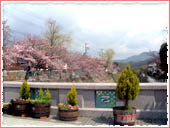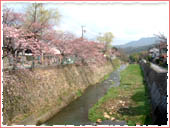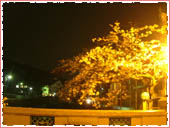You can quickly access Zenpukuji Temple by climbing the stone steps on the side facing the Hankyu Bus Arima Information Office.
Founded in the 8th century by Gyoki, a monk whose name is venerated in Buddhism even today, Zenpukuji Temple is a temple steeped in history and lineage. Majestically standing in the temple's compound are four cherry blossom trees exceeding 270 years in age. Every year in the beginning of April, visitors come in large numbers to enjoy the beautiful sight of these trees in bloom. These cherry blossom trees are called the "trees of the Kobe people" as well as "Kobe's prized trees."

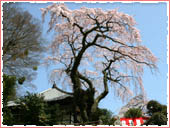
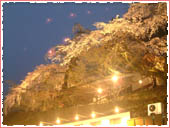
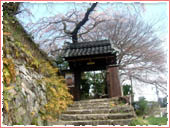
You can reach Rinkeiji Temple, which is adjacent to the Arima Nursery School, by a few minutes walk to the southeast of Zenpukuji Temple.
Rinkeiji is an old, historical temple founded in 1601. The compound has a red blossom plum tree named Mikaiko that is more than 200 years old. Every year at the end of March, the beautiful crimson flowers blossom in multiple layers. From ancient times, it is said that those that eat the fruit of the plums will be blessed with a child. For this reason, the plums are called the "plums of the nymphs".
Ensuing the plum blossom-viewing season, the exquisite cherry blossoms of long-standing weeping cherry trees can be seen on the temple grounds.
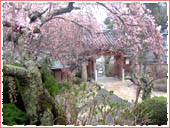
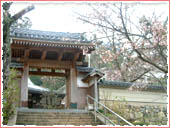
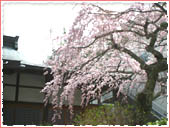
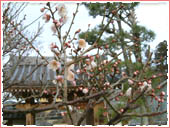
The cherry blossoms trees at Onsenji Temple (Yakushido), located in the proximity of an area of many temples in central Arima, are also particularly beautiful.
Gyoki, the name of a famous Buddhist monk who founded Arima Onsen, built this old venerable temple in the 8th century. Another monk who deeply respected Gyoki followed in Gyoki's footsteps by restoring Arima Onsen in the 12th century. The current buildings were rebuilt and consolidated in 1782.

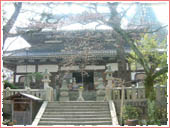
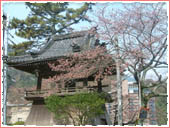
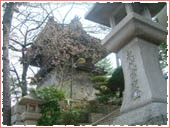
Located nearby in an area northeast of Onsenji Temple, Nenbutsuji Temple has been called the imprint of the villa from Toyotomi Hideyoshi's wife "Nene" and has a spectacular view of the entire area. The main hall was built in 1712 and is the oldest building in the Arima Onsen area. Its garden, called the Sal Tree Garden, features a sal tree whose age is over 300 years. Each year in late June when summer is just beginning in Japan, the tree displays its beautiful flowers, and there is an appreciation festival held at the temple for the Sal flower and the ichigen-kin, a one-stringed instrument.
The enchanting pink blossoms of the weeping cherry blossom tree in the front garden has no shortage of admirers during the cherry blossom-viewing season.
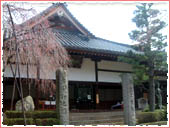
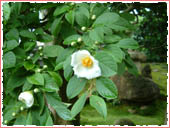
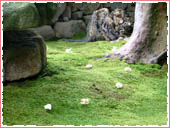
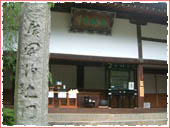
Gokurakuji Temple adjoins the Nenbutsuji Temple and is famous for the excavation of its medieval ruins. On the grounds there is a large cherry tree with a beauty that pleasantly distracts the visitor from the sight of the old ruins.
When the Gokurakuji Temple's kitchen was being rebuilt from its collapse during the Kobe Earthquake in 1993, workers discovered ruins dating back more than 400 years before. Upon examination, it became clear that these ruins were the bath and garden of Yunoyama Goten built by Taiko Hideyoshi. To commemorate the site, the city of Kobe opened a museum in 1999 exhibiting the steam bath and bath in stone and preserved these baths in their original condition.
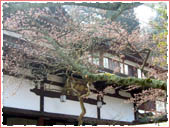
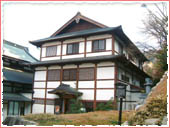
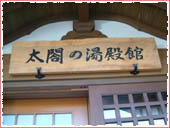
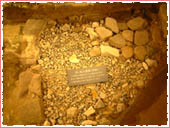
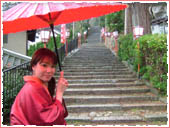
There are a large number of cherry trees lined up along the long road to Tosen Shrine located about 100m south of Gokurakuji temple.
As the place of worship and protectorate of Arima hot springs, Tosen Shrine holds a time-honored first bath of the year ceremony on January 2nd.
Known as a child-giving shrine, Tosen Shrine is reported to bestow the gift of a child when visitors enter the baths of Arima Onsen and wish for a child. Likewise amulets from the shrine for granting children are sought from all parts of the country.
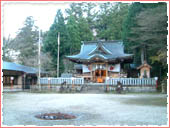
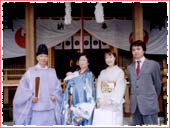
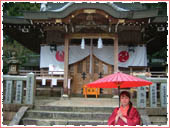
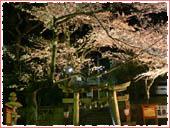
In the central part of Arima Onsen, there is a bridge with red railing called Nene-bashi. Near the bridge is a bronze statute of Nene, the lawful wife of Hideyoshi. From this place, visitors can climb down to Arima River Shinsui Park. Every year in the first part of April, a cherry blossom festival is held and all the local people of Arima gather at the river site to participate in the merriment. In the evening, the red bridge and cherry trees are lit up and the contrast against the darkness creates a dreamy feeling.
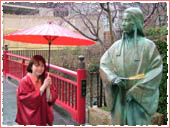
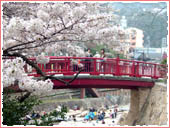
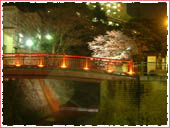
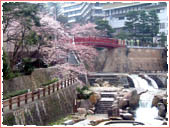
The Taiko-hashi Bridge is downstream from the Nene-bashi Bridge and is famous for its association with Taiko Hideyoshi. When you look down from the bridge at the Arima River, you can see a beautiful line of cherry trees. Near this bridge there is a "Yukemuri-hiroba Open Space" with a statue of Hideyoshi, the Tamoto Stone, etc. Next to the bridge there were seats where you can rest.
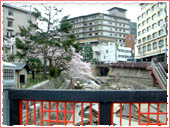
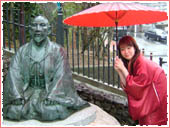
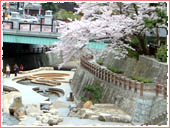
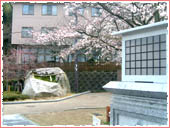
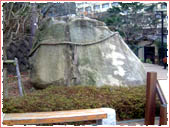
There is a splendid cherry tree at Tamoto Stone, which is found near the Taiko-hashi Bridge. Whenever you are strolling around the hot springs town, we recommend that you stop here since there is a rest area. The Tamoto Stone is an enormous rock weighing around 130 tons. Legend has it that the god of the Onsen Shrine removed a small stone from his sleeve and threw it. As the stone traveled through the air, it gradually grew bigger and bigger. Also, in the parking lot of the spa manor (Hoyosho) near the Tamoto Stone, there is a beautiful late-blooming cherry tree.
Referring to tranquility of this beautiful Japanese garden of the former Zuihoji Temple, Toyotomi Hideyoshi once said of the garden, "No matter how much you see of it, you never grow tired of it." With places for resting scattered all throughout, the Zuihoji Park is meant to enjoy slowly. In autumn, visitors can enjoy the beautiful leaves with their autumn hues while having a bowl of udon noodles, warm oden, or sweet Japanese sake. The park has also been chosen by Kobe City as one of its 50 designated places to see beautiful cherry blossoms. In the spring, we have an opportunity to see the beautiful cherry blossoms that prompted its selection by the Kobe City government.


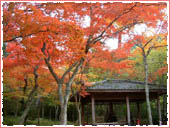
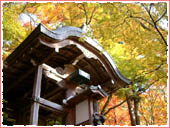
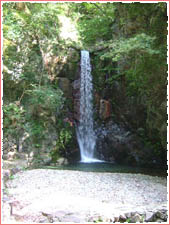
As with Zuihoji Park, Tsuzumigataki Park is a park famous for its beauty cherry blossoms and autumn leaves. The park got its name from the waterfall where a drum-like sound can be heard from the water striking the ground and reverberating in the rock formation. Named for Japanese drum used in kabuki, Tsuzumi reveals a special characteristic with each season. In spring the thoughts of the visitor are washed pure by the water reflecting the new green foliage and beautiful cherry blossoms while in the summer visitors are greeted with the fluttering of fireflies and the singing of Kajika frogs. In the autumn, many people enjoy strolling through the forest and gazing at the beautiful autumn leaves.
A picturesque scene of cherry trees can be seen from the Koen-bashi Bridge near the Arima Elementary School. Beautiful cherry trees line the sides of the river both upstream and downstream. The Arimagawa River running under this bridge flows north and joins the Mukogawa River where the water continues flowing to Osaka Bay.
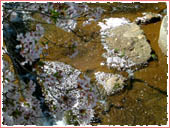
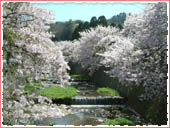
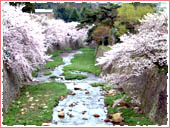
When you enter Arima Onsen from the Nishinomiya's North IC on Chugoku Highway, you can quickly see a quaint Otokura-bashi Bridge on your left-hand side. If you look at the Arimagawa River from this bridge, you will be treated to the spectacle of an extremely beautiful line of cherry trees. The road goes along the river from the bridge continuing to Taiko-hashi Bridge and is called Small Path of Cherry Blossoms. In the first part of the summer the glimmering swarms of fireflies can be seen on the riverbanks in the first poem of the summer season.
